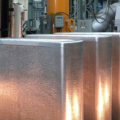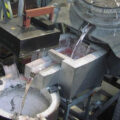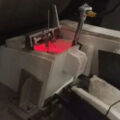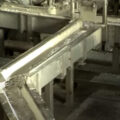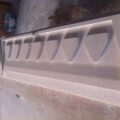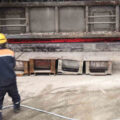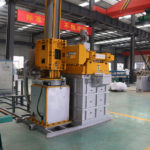The aluminum strip continuous casting and rolling process is an advanced production process introduced from abroad in the 1980s. Continuous casting is a process of casting and rolling. The liquid metal aluminum is continuously supplied from the casting source of the casting roll through the caster tips and nozzles, and the cast-rolled sheet is cast and rolled from the other cast-rolled roll through continuous cooling, casting, and rolling of the casting roll. At the same time, the amount of metal entering and exiting the casting-rolling zone is always in balance to achieve a stable continuous casting-rolling process.

Aluminum Strip Continuous Casting Process
Aluminum water → static holding furnace → degassing unit → filter box → flow supply system → casting and rolling mill → spraying system → shearing machine → coiling.
The aluminum ingot is put into the round furnace and melted at high temperatures. When there is a certain temperature after melting, the metal solvent is added and stirred to make the metal solvent reach a certain content. The furnace can be poured into the static furnace.
The liquid aluminum in the static furnace does not enter into the next process immediately and needs to flow through a little bit, so it is kept warm in the static furnace.
Aluminum water flows out from the static furnace, degassing and heat preservation in the degassing unit, and continues to flow to the next process. The degassing box has two chambers, one is degassing, the other is heating or heat preservation.
Filtration is completed in the CFF filter box. There are ceramic foam filter plates installed in the filter box cavity to filter. The quality of this process is directly related to the quality of cast rolling plate. If the filtration is complete, there will be no slag inclusion, and if it is not thorough, there will be quality problems.
The cast rolling process is completed in two rolls, which is continuous casting and rolling. The pouring is completed between 60-70mm. After setting, the metal is rolled.
The tolling process is mainly shear, and some units are equipped with milling machine to mill the edge.
The continuous aluminum plate and strip produced at the front end of rolling mill are coiled into coils.

